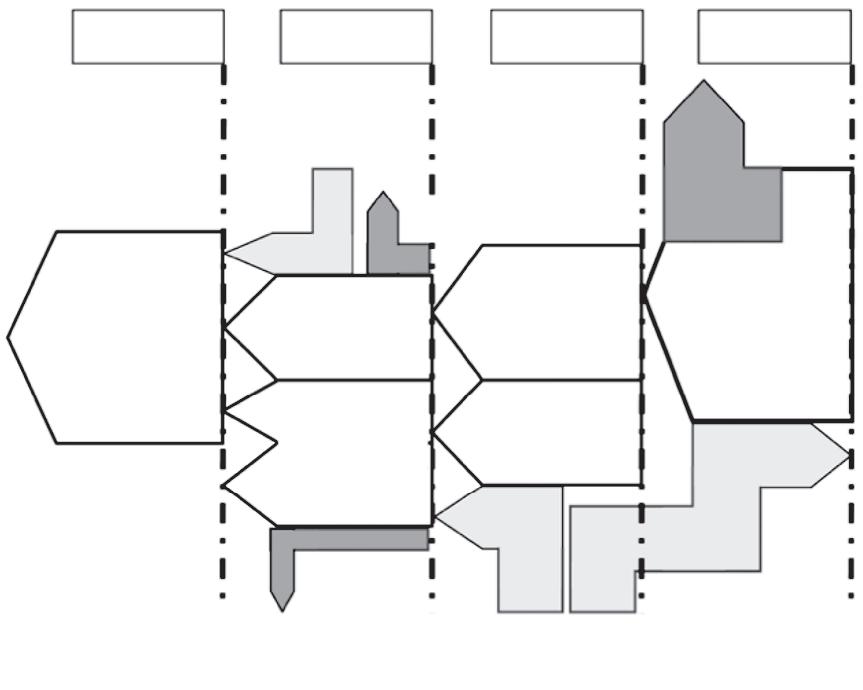References ADEME (2019). Bâtiment à Énergie Positive & Réduction Carbone [In French]. http://www.batiment-energiecarbone.fr/contexte-a2.html Ahern C. and Norton B. (2019). Thermal energy refurbishment status of the Irish housing stock. Energy and Buildings 202(1), 109348. https://doi.org/10.1016/j.enbuild.2019.109348 Ali A.S., Zanzinger Z., Debose D. and Stephens B. (2016). Open source building science sensors (OSBSS): a low-cost Arduino-based platform for long-term indoor environmental data collection. Building and Environment 100, 114–126. https://doi.org/10.1016/ j.buildenv.2016.02.010. Alig M., Frischknecht R., Krebs L., Ramseier L. and Stolz P. (2020). LCA of climate friendly construction materials. Uster, Switzerland: treeze Ltd. https://treeze.ch/fileadmin/user_upload/downloads/ Publications/Case_Studies/Building_and_Construction/670_LCA_ constructionMaterials_1.5C_v1.4.pdf
Bavaresco M.V., D’Oca S., Ghisi E. and Lamberts R. (2019). Technological innovations to assess and include the human dimension in the building-performance loop: a review. Energy and Buildings 202, 109365. https://www.sciencedirect.com/science/article/abs/pii/ S0378778819315853?via%3Dihub Bedoić R., Jurić F., Ćosić B., Pukšec T., Čuček L. and Duić N. (2020). Beyond energy crops and subsidised electricity – a study on sustainable biogas production and utilisation in advanced energy markets. Energy 201, 117651. https://ideas.repec.org/a/eee/energy/ v201y2020ics0360544220307581.html Bekö G., Lund T., Nors F., Toftum J. and Clausen G. (2010). Ventilation rates in the bedrooms of 500 Danish children. Building and Environment 45(10), 2289–2295. https://www.sciencedirect.com/ science/article/abs/pii/S0360132310001216
Altenberg Vaz, N. and Inanici M. (2020). Syncing with the sky: daylight-driven circadian lighting design. LEUKOS e1–e19. https:// www.tandfonline.com/doi/abs/10.1080/15502724.(2020).1785310?jo urnalCode=ulks20
Bekö G., Weschler C.J., Langer S., Callesen M., Toftum J. and Clausen G. (2013). Total phthalate intakes estimated from urine of Danish children: comparisons with estimated intakes from dust ingestion, inhalation and dermal absorption in homes and daycare centers. PLoS ONE 8(4), e62442. https://journals.plos.org/plosone/ article?id=10.1371/journal.pone.0062442
Anand P., Cheong D., Sekhar C., Santamouris M. and Kondepudi S. (2019). Energy saving estimation for plug and lighting load using occupancy analysis. Renewable Energy 143, 1143–1161. https://doi. org/10.1016/j.renene.2019.05.089.
Bell M.L. and Dominici F. (2008). Effect modification by community characteristics on the short-term effects of ozone exposure and mortality in 98 US communities. American Journal of Epidemiology 167(8), 986. https://academic.oup.com/aje/article/167/8/986/85687
Anderson J. and Moncaster A. (2020). Embodied carbon of concrete in buildings, part 1: analysis of published EPD. Buildings and Cities 1(1), 198–217. https://journal-buildingscities.org/articles/10.5334/ bc.59/
Bertoldi P., Economidou M., Palermo V., Boza-Kiss B. and Todeschi, V. (2020). How to finance energy renovation of residential buildings: review of current and emerging financing instruments in the EU. Wiley Interdisciplinary Reviews: Energy and Environment 10(1), e384. https:// onlinelibrary.wiley.com/doi/full/10.1002/wene.384
Arlian L.G. and Platts-Mills T.A.E. (2001). The biology of dust mites and the remediation of mite allergens in allergic disease. Journal of Allergy and Clinical Immunology 107(3), 406–413. https://pubmed. ncbi.nlm.nih.gov/11242601/ Artiola J.F., Reynolds K.A. and Brusseau M.L. (2019). Urban and household pollution. In Environmental and Pollution Science (3rd edition) (ed. Brusseau M.L. et al.), pp. 311–326. Elsevier. https://www. sciencedirect.com/science/article/pii/B9780128147191000185 Ascione F., Bianco N., De Masi R.F., Mauro G.M. and Vanoli G.P. (2017). Resilience of robust cost-optimal energy retrofit of buildings to global warming: a multi-stage, multi-objective approach. Energy and Buildings 153, 150–167. https://www.sciencedirect.com/science/ article/abs/pii/S0378778817320418
Bertolino S., Cannistraro G., Franzitta G. and Rizzo G. (1991). The optimum selection of the window shading levels and of the indoor ventilation rates as a design strategy for bioclimatic commercial buildings. In Energy Conservation in Buildings (ed. Sayigh A.A.M.), pp. 60–65. Pergamon. https://www.sciencedirect.com/topics/engineering/ ventilation-rate Binova Ltd. (2020). One Click LCA. https://www.oneclicklca.com/ Birgisdottir H., Moncaster A., Houlihan Wiberg A. et al. (2017). IEA EBC annex 57 ‘evaluation of embodied energy and CO2eq for building construction’. Energy and Buildings 154, 72–80. https://doi. org/10.1016/j.enbuild.2017.08.030.
Bakó-Biró Z., Clements-Croome D.J., Kochhara N., Awbia H.B. and William M.J. (2012). Ventilation rates in schools and pupils’ performance. Building and Environment 48, 215–223. https://www. sciencedirect.com/science/article/abs/pii/S0360132311002617?via%3 Dihub
Birleanu A.M., Chavdaro G. and Mäkelä T. (2013). Development of an investment programme for buildings rehabilitation: technical report on public buildings. JASPERS Knowledge Economy and Energy Division. http://www.jaspersnetwork.org/download/attachments/5439503/ Development%20of%20Investment%20Programmes%20%20rehabilitation%20public%20buildings.pdf?version= 1&modificationDate=1375886624000&api=v2
Bakonyi D. and Donszay G. (2016). Simulation aided optimization of a historic window’s refurbishment. Energy and Buildings 126, 51–69. https://www.sciencedirect.com/science/article/abs/pii/S037877881630 3668?via%3Dihub
Bololia M. and Androutsopoulos A. (2020). Achieving nearly zero energy buildings in Greece. IOP Conference Series: Earth and Environmental Science 410, 012035. https://iopscience.iop.org/ article/10.1088/1755-1315/410/1/012035
Banja M., Jégard M., Motola V. and Sikkema R. (2019). Support for biogas in the EU electricity sector – a comparative analysis. Biomass and Bioenergy 128, 105313. https://www.sciencedirect.com/science/ article/pii/S0961953419302624
Bornehag C.G., Sundell J., Hägerhed-Engman L. and Sigsgaard, T. (2005). Association between ventilation rates in 390 Swedish homes and allergic symptoms in children. Indoor Air 15(4), 275–280. https:// pubmed.ncbi.nlm.nih.gov/15982274/
Bateson T.F. and Schwartz J. (2007). Children’s response to air pollutants. Journal of Toxicology and Environmental Health A 71(3), 238–243. https://www.tandfonline.com/doi/abs/10.1080/ 15287390701598234
Boverket (2018). Klimatdeklaration av byggnader. Förslag på metod och regler – Slutrapport. Report 2018:23. [In Swedish]. https://www.boverket.se/sv/om-boverket/publicerat-av-boverket/ publikationer/2018/klimatdeklaration-av-byggnader2/
EASAC
Decarbonisation of buildings | June 2021 | 59




